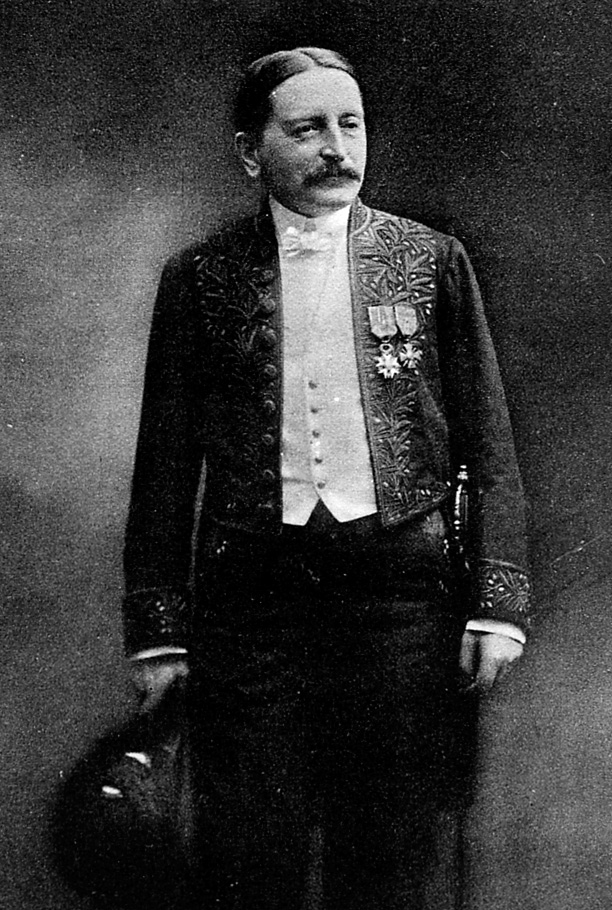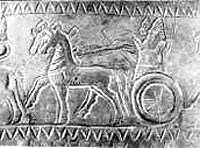|
Economy Of Urartu
The economy of Urartu refers to the principles of management of Urartu, the ancient state of Western Asia which existed from the thirteenth to the sixth century BC. It peaked around the eighth century BC but was destroyed with the fall of the state about a century later.Urartu Encyclopædia Britannica online The economy of Urartu was typical of ancient despotism and was closely associated with that of neighboring . [...More Info...] [...Related Items...] OR: [Wikipedia] [Google] [Baidu] |
Urartu
Urartu (; Assyrian: ',Eberhard Schrader, ''The Cuneiform inscriptions and the Old Testament'' (1885), p. 65. Babylonian: ''Urashtu'', he, אֲרָרָט ''Ararat'') is a geographical region and Iron Age kingdom also known as the Kingdom of Van, centered around Lake Van in the historic Armenian Highlands. The kingdom rose to power in the mid-9th century BC, but went into gradual decline and was eventually conquered by the Iranian Medes in the early 6th century BC. Since its re-discovery in the 19th century, Urartu, which is commonly believed to have been at least partially Armenian-speaking, has played a significant role in Armenian nationalism. Names and etymology Various names were given to the geographic region and the polity that emerged in the region. * Urartu/Ararat: The name ''Urartu'' ( hy, Ուրարտու; Assyrian: '; Babylonian: ''Urashtu''; he, אֲרָרָט ''Ararat'') comes from Assyrian sources. Shalmaneser I (1263–1234 BC) recorded a campaign in wh ... [...More Info...] [...Related Items...] OR: [Wikipedia] [Google] [Baidu] |
François Thureau-Dangin
François Thureau-Dangin (3 January 1872 in Paris – 24 January 1944 in Paris) was a French archaeologist, assyriologist and epigrapher. He played a major role in deciphering of the Sumerian and Akkadian languages. He studied under Julius Oppert in Paris, and from 1895, was associated with duties performed at the Louvre, where in 1908, he was appointed assistant curator of the Oriental Antiquities department, in french thdépartement des Antiquités orientaleswhere he spent most of his career and whom he led from 1925 to 1928. On behalf of the Louvre museum, he conducted then excavations at Arslan Tash (1927) and at Til Barsip (1929–1931). [...More Info...] [...Related Items...] OR: [Wikipedia] [Google] [Baidu] |
Igor Diakonov
Igor Mikhailovich Diakonoff (occasionally spelled Diakonov, russian: link=no, И́горь Миха́йлович Дья́конов; 12 January 1915 – 2 May 1999) was a Russian historian, linguist, and translator and a renowned expert on the Ancient Near East and its languages. His brothers were also distinguished historians. Life and career Diakonoff was brought up in Norway. He graduated from Leningrad State University (now Saint Petersburg State University) in 1938. In the same year he joined the staff of the Hermitage Museum in Leningrad (now Saint Petersburg). In 1949, he published a comprehensive study of Assyria, followed in 1956 by a monograph on Medes, Media. Later on, he teamed up with the linguist Sergei Starostin to produce authoritative studies of the Languages of the Caucasus, Caucasian, Afroasiatic languages, Afroasiatic, and Hurro-Urartian languages. Diakonoff was honored in 2003 with a festschrift volume published in his memory, edited by Lionel Bender (l ... [...More Info...] [...Related Items...] OR: [Wikipedia] [Google] [Baidu] |
Sargon II
Sargon II (Neo-Assyrian cuneiform: , meaning "the faithful king" or "the legitimate king") was the king of the Neo-Assyrian Empire from 722 BC to his death in battle in 705. Probably the son of Tiglath-Pileser III (745–727), Sargon is generally believed to have become king after overthrowing Shalmaneser V (727–722), probably his brother. He is typically considered the founder of a new dynastic line, the Sargonid dynasty. Modelling his reign on the legends of the ancient rulers Sargon of Akkad, from whom Sargon II likely took his regnal name, and Gilgamesh, Sargon aspired to conquer the known world, initiate a golden age and a new world order, and be remembered and revered by future generations. Over the course of his seventeen-year reign, Sargon substantially expanded Assyrian territory and enacted important political and military reforms. An accomplished warrior-king and military strategist, Sargon personally led his troops into battle. By the end of his reign, all of hi ... [...More Info...] [...Related Items...] OR: [Wikipedia] [Google] [Baidu] |
Van, Turkey
Van ( hy, Վան; ku, Wan) is a mostly Kurdish-populated and historically Armenian-populated city in eastern Turkey's Van Province. The city lies on the eastern shore of Lake Van. Van has a long history as a major urban area. It has been a large city since the first millennium BCE, initially as Tushpa, the capital of the kingdom of Urartu from the 9th century BCE to the 6th century BCE, and later as the center of the Armenian kingdom of Vaspurakan. Turkic presence in Van and in the rest of Anatolia started as a result of Seljuk victory at the Battle of Malazgirt (1071) against the Byzantine Empire. Van is often referred to in the context of Western Armenia and Northern Kurdistan. History Archaeological excavations and surveys carried out in Van province indicate that the history of human settlement in this region goes back at least as far as 5000 BCE. The Tilkitepe Mound, which is on the shores of Lake Van and a few kilometres to the south of Van Castle, is the only sourc ... [...More Info...] [...Related Items...] OR: [Wikipedia] [Google] [Baidu] |
Tushpa
Tushpa ( hy, Տոսպ ''Tosp'', Akkadian: ''Turuspa'', tr, Tuşpa; from Urartianbr>tur-, ''to destroy''i.e. victorious) was the 9th-century BC capital of Urartu, later becoming known as Van which is derived from ''Biainili'', the native name of Urartu. The ancient ruins are located just west of Van and east of Lake Van in the Van Province of Turkey.http://rbedrosian.com/Classic/kvan1.htm In 2016 it was inscribed in the Tentative list of World Heritage Sites in Turkey. It was possibly pronounced as "Tospa" in ancient times as there was no symbolic ''O'' equivalent in Akkadian cuneiform so the symbol used for ''U'' was frequently substituted. History Archaeological excavations and surveys carried out in the Van Province indicate that the history of human settlement in this region dates back at least as far as 5000 BC. The Mound located along the shores of Lake Van and a few kilometres to the south of the citadel of Van, is the only known source of information about the old ... [...More Info...] [...Related Items...] OR: [Wikipedia] [Google] [Baidu] |
Semiramis
''Samīrāmīs'', hy, Շամիրամ ''Šamiram'') was the semi-legendary Lydian- Babylonian wife of Onnes and Ninus, who succeeded the latter to the throne of Assyria, according to Movses Khorenatsi. Legends narrated by Diodorus Siculus, who drew primarily from the works of Ctesias of Cnidus,Diodorus Siculus: The Library of History, Book II, Chapters 1-22 describe her and her relationships to Onnes and King Ninus. Armenians and the Assyrians of Iraq, northeast Syria, southeast Turkey, and northwest Iran still use ''Shamiram'' as a given name for girls. The real and historical Shammuramat (the original Akkadian form of the name) was the Assyrian wife of Shamshi-Adad V (ruled 824 BC–811 BC). She was the ruler of the Neo-Assyrian Empire as its regent for five years before her son Adad-nirari III came of age and took the reins of power. She ruled at a time of political uncertainty, which is one of the possible explanations for why Assyrians may have accepted the rule of a woman w ... [...More Info...] [...Related Items...] OR: [Wikipedia] [Google] [Baidu] |
Moses Of Chorene
Movses Khorenatsi (ca. 410–490s AD; hy, Մովսէս Խորենացի, , also written as ''Movses Xorenac‘i'' and Moses of Khoren, Moses of Chorene, and Moses Chorenensis in Latin sources) was a prominent Armenian historian from the late antique period and the author of the '' History of the Armenians.'' Movses's ''History of the Armenians'' was the first attempt at a universal history of Armenia and remains the only known general account of early Armenian history. It traces Armenian history from its origins to the fifth century, during which Movses claimed to have lived. His history had an enormous impact on Armenian historiography and was used and quoted extensively by later medieval Armenian authors. He is called the "father of Armenian history" () in Armenian, and is sometimes referred to as the "Armenian Herodotus." Movses's history is also valued for its unique material on the old oral traditions in Armenia before its conversion to Christianity. Movses identified hims ... [...More Info...] [...Related Items...] OR: [Wikipedia] [Google] [Baidu] |
Shamiram, Armenia
Shamiram ( hy, Շամիրամ), is a village in the Aragatsotn Province of Armenia. It is mostly populated by Yazidis. The village is named after the Assyrian legendary queen Semiramis. See also * Aragatsotn Province * Yazidis in Armenia *Semiramis * Genocide of Yazidis by ISIL A genocide of Yazidis by the Islamic State was carried out in the Sinjar area of northern Iraq in the mid-2010s. The genocide led to the expulsion, flight and effective exile of the Yazidis. Thousands of Yazidi women and girls were forced i ... References *Report of the results of the 2001 Armenian Census Populated places in Aragatsotn Province Yazidi populated places in Armenia {{Aragatsotn-geo-stub ... [...More Info...] [...Related Items...] OR: [Wikipedia] [Google] [Baidu] |
Rusa I
Rusa I (ruled: 735–714 BC) was a King of Urartu. He succeeded his father, king Sarduri II. His name is sometimes transliterated as ''Rusas'' or ''Rusha''. He was known to Assyrians as ''Ursa'' (which scholars have speculated is likely a more accurate pronunciation of the name) and possibly ''Urzana''. His birth name may have been ''Uedipri''. Rusa I built the fortress of Rusahinili (''Rusa-hinili'', city of Rusa), modern ''Toprakkale'', located near the modern city of Van in eastern Turkey. Background Before Rusa's reign had begun, his father, King Sarduri II, had already expanded the kingdom to southeastern Anatolia, and had managed to retake various Anatolian territories from Assyria during a brief period of weakness in the Assyrian Empire. The succession from Sarduri II is not entirely clear. There's also attested a king Sarduri III, so Rusa may have been his son. When Rusa I inherited the throne, the Assyrians continued campaigns against him. The Assyrian king Tiglat ... [...More Info...] [...Related Items...] OR: [Wikipedia] [Google] [Baidu] |
Sarduri II
Sarduri II (ruled: 764–735 BC) was a King of Urartu, succeeding his father Argishti I to the throne. The Urartian Kingdom was at its peak during his reign, campaigning successfully against several neighbouring powers, including Assyria. The succession from Sarduri II is not entirely clear. There's also attested a king Sarduri III, so Rusa may also have been his son. Sarduri II notably expanded Urartian territory by conquering the northern region of Colchis, as well as Melid and Kummuh in the Euphrates valley. In 743 BC, at a battle located somewhere in Kummuh, the Assyrians, under Tiglath-pileser III, defeated Sarduri and his anti-Assyrian coalition, forcing the Urartians back across the Euphrates. Sarduri II was so confident in his power that he erected a massive wall at Tushpa (modern-day Van) with the following inscription: :"the magnificent king, the mighty king, king of the universe, king of the land of Nairi, a king having none equal to him, a shepherd to be wondered ... [...More Info...] [...Related Items...] OR: [Wikipedia] [Google] [Baidu] |






